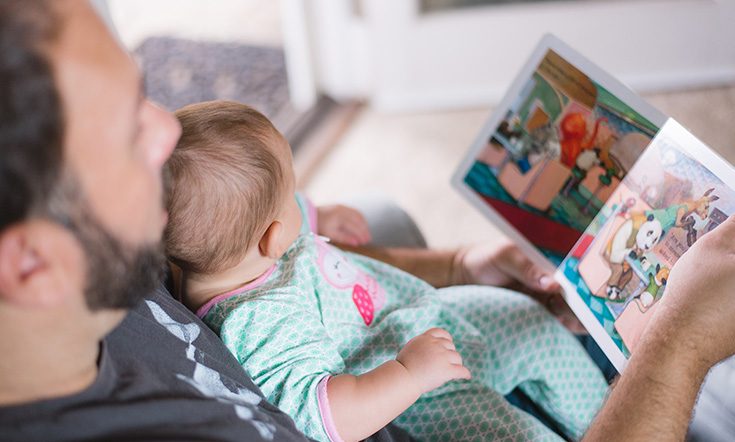

You probably already know that reading to your child is important, and you may have heard that the earlier you start the better. But how much does an infant really understand? What if your baby just wants to suck on the book rather than listen to you make funny animal sounds? Here you’ll discover the importance of reading to your baby, plus plenty of tips on how to choose books and when to read them.
Why read to babies?
Although your baby might seem too young and appears to be getting very little enjoyment from it, reading helps your baby’s development in lots of ways.
1. Reading inspires a lifelong love of literature
Reading to your baby early teaches your baby to value books, and nurtures a deep love of reading to last a lifetime. When babies associate storytime with you as a time of joy, fun, and closeness, a book lover is created.
2. Reading teaches your child about language and emotions
The roots of language are developing in a baby’s brain long before they can speak. The more words your baby hears, the more he’ll learn and the better he’ll be able to talk.
Your baby hears you use different emotions and expressive sounds when reading, and this supports their social and emotional development. It encourages other skills like pointing, touching, and copying sounds.
3. Reading strengthens your relationship
Although your baby might seem too young to understand what you’re saying, he enjoys this opportunity of togetherness, connection, cuddles, and likes the sound of your voice. Your baby will start to recognise the book-sharing routine and respond with excitement, smiles, or a feeling of calm particularly if it’s part of the bedtime ritual.
How to choose books for babies – ages and stages
Birth – 6 months:
- Although your baby may not know what the picture in a book means, they will start to focus on them. They may begin to show an interest in bright colours, faces, and different patterns.
- Your little one might start to explore books with their senses, such as wanting to grab the books, mouth and chew them, or close them or drop them. This is all normal, so it’s a great idea to choose board, cloth, or vinyl books.
- Choose books that are colourful, repetitive, or rhyming.
6 – 12 months:
- By 9 months, your baby may show a preference for certain books, pages, or pictures. They’ll probably still want to put them in their mouth – it’s just how they explore everything (and probably soothing for sore gums)!
- By 12 months, your baby might start to turn the pages themselves, repeat sounds you make, and pat or point to the pictures.
- Choose books that have different textures, mirrors, or peekaboo flaps. You could even show them photo albums of people they know and love.
What is the best way to read to babies?
Sharing stories with your baby doesn’t mean you have to read every time. Instead, you can look at books together, and chat about what’s on the pages or simply point out different pictures. By watching you, your baby will be learning how to hold books the right way, and how to turn pages gently.
You might prefer to sometimes make up your own stories, or sing songs, or read books in another language. All of these experiences will enhance your baby’s development.
When and how often should you read to your baby?
You can make reading a part of your daily routine whenever and wherever you like. Reading at bedtime is one of the best times as it gives you and your baby a chance to wind down and snuggle, while setting up a calming routine that will last throughout childhood.
However, reading doesn’t necessarily have to be restricted to sleep times. Pack books in the nappy bag and take them with you everywhere. They come in handy when you’re waiting to see your maternal and child health nurse, or stuck in the supermarket queue. In the park, on the train, in the pram…any time is a good time for a story!
What are some other reading tips?
- Don’t be afraid to read the same books over and over again ㅡ babies love repetition
- Try to share at least one book a day
- Having a comfortable reading chair is great to incorporate into your reading routine
- Read with expression, don’t be embarrassed about using different voices or making your voice lower or higher
- Don’t feel you need to follow the text exactly. You can always improvise, ask questions, or point out different characters, colours, and shapes in pictures
- Reading doesn’t have to be serious. Have some fun, gently bounce your baby on your lap or make funny animal noises
- Turn off any distractions, such as the television or music, and find a quiet place so your baby can focus on you and the story























